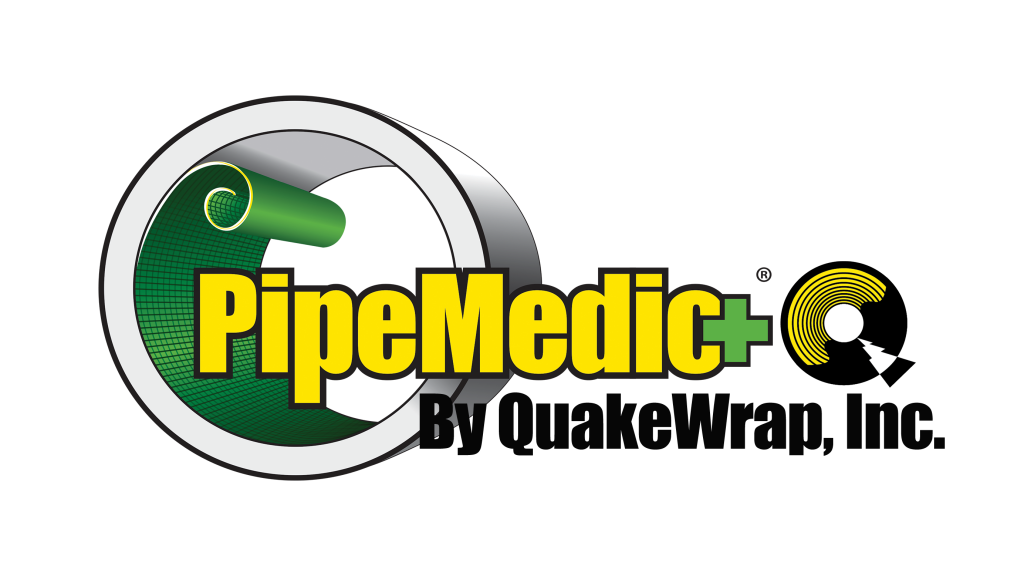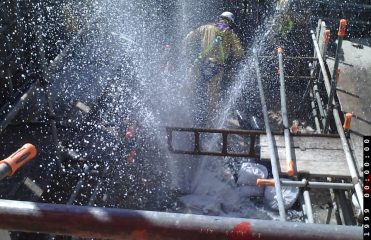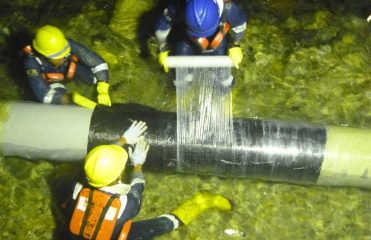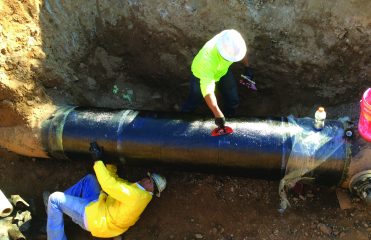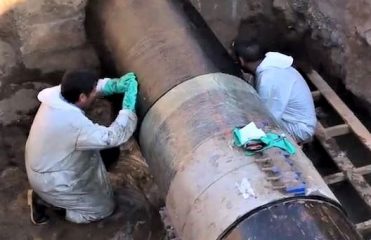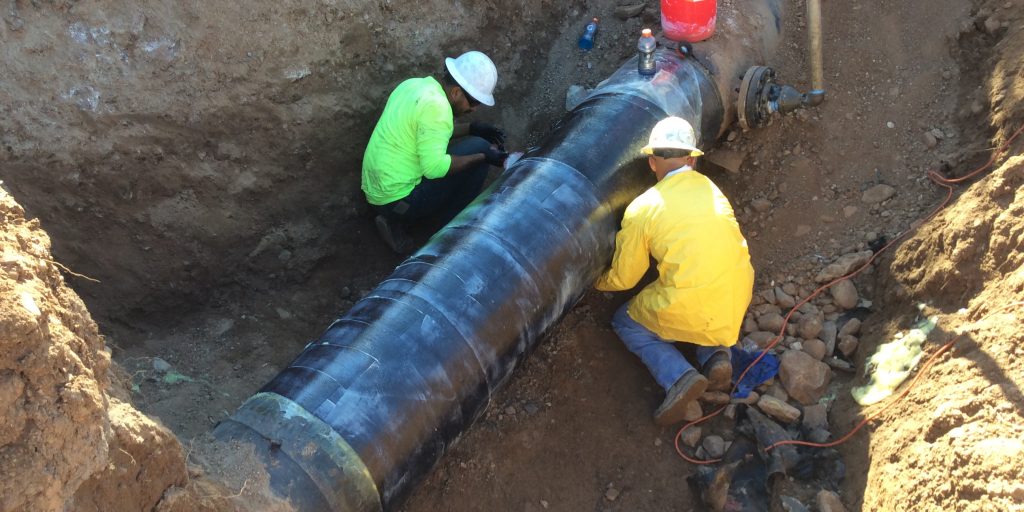
External Pipe Strengthening and Corrosion Protection
PipeMedic® by QuakeWrap uses an external wet layup system with designated epoxies that cure quickly (including submerged applications) to externally repair pipes carrying everything from potable water to oil and gas. These pipes can be on land or in water, and can even be conveying fluids using extreme internal pressures and withstanding large external loads. Examples include pipe repairs at water/wastewater treatment plants, oil and gas piping, power generation plants, mines, and industrial facilities with any piping of significant size in need of rehabilitation. Pipelines with corrosion, cracks, and other defects can be restored to original design capacity at a minimum cost by utilizing this method.
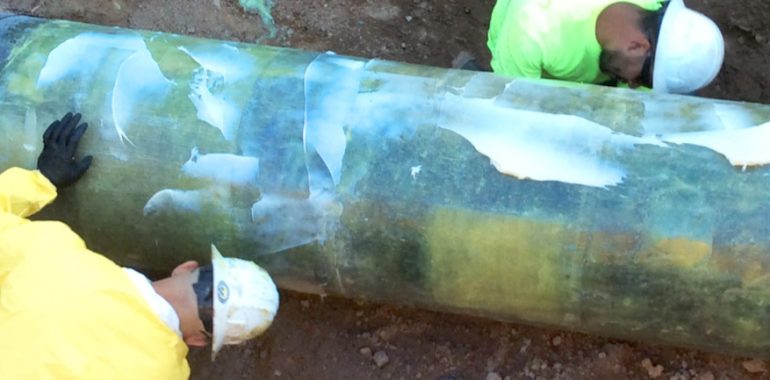
Wide Application in Utility Infrastructure
- Pipes
- Penstocks
- Tunnels
- Storage tanks
- Manholes
- Vaults
- Junction chambers
- Pump stations
- Lift stations
Capability
Carbon and glass fiber polymer systems (CFRP/GFRP) provide an unmatched level of strength in comparison with other materials used in infrastructure rehabilitation. They are light-weight, corrosion-resistant, and enable fast installation to meet tight project schedules.
Among the clients of QuakeWrap are a number of major utilities, including the largest nuclear power generating station, in the U.S. In a number of PCCP pipes in this facility, corrosion of the steel wires had resulted in cracking of the concrete and weakening of the pipes. During an on-site demonstration, the steel strands in a new pipe were intentionally cut to model a pipe in which the strands have been lost due to corrosion. The weakened pipe was wrapped with QuakeWrap® carbon fiber reinforced polymer (CFRP), its ends were capped with steel plates and the pipe was pressurized. Testing was stopped when the pipe pressure exceeded the original design strength of the pipe. This clearly demonstrated the feasibility of this technique.
A major concern for most pipe repair projects is the time required to complete the repair. Our tack coat is an engineered, high-adhesion, fast cure epoxy. As a part of the approval process, it was demonstrated that a single coat of tack coat applied to the surface of the pipe is strong enough to support the weight of three layers of carbon fabric; this leads to faster construction time and significantly reduces downtime of the system.
